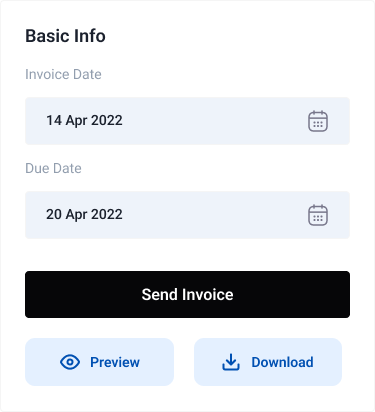Did You Know?
Advanced visual search system powered by Ajax
Advanced visual search system powered by Ajax
The Goods and Services Tax (GST) is a complex topic in India, with various aspects like registration methods, return form submissions, and tax challans. If a business’s annual turnover is less than ₹20 lakhs, GST registration can be canceled, removing the entity from GST-enrolled status and exempting it from GST payments or receipts.
Applicant must provide following details for GST REG-16 cancellation revocation:
Turnover less than ₹20 lakhs.
Taxpayer cancels due to business discontinuation or conversion.
Tax officer cancels business due to violation of parameters.
LUT eligibility for registered GST taxpayers is open, except for those prosecuted for evasion. Validity is one year, and fresh filings are required. Bonds require manual submission.
Registered individuals can apply for GST revocation within 30 days of receiving cancellation order, only applicable when initiated by the proper officer.
Applicant files Form GST REG-21 for GST registration cancellation revocation, either directly or through a facilitation center authorized by the Commissioner.
Taxpayer registration cancellation can be revoked by the proper officer if satisfactory reasons are provided, within 30 days, and an order in Form GST REG-22 is issued.
GSTR1 is the form used for tax returns on outward supplies, encompassing both interstate and intrastate B2B and B2C sales. It also includes details of purchases under reverse charge and inter-state stock transfers made during the tax period. Late filing of GSTR1 can result in a late fee, which is collected in the subsequent open return, Form GSTR-3B. Since January 1, 2022, taxpayers cannot file Form GSTR-1 if they haven't filed Form GSTR-3B in the preceding month.
This amendment form corrects any discrepancies between the GSTR-1 of a taxpayer and the GSTR-2 of their customers. The filing window for GSTR1A is between the 15th and 17th of the following month.
Monthly GST returns for inward supplies are filed using this form. It contains taxpayer information, return period, and detailed invoice-level purchase information related to goods and services separately.
This auto-generated tax return compiles purchases and inward supplies made by a taxpayer based on the information from their suppliers GSTR-1.
An auto-generated document that acts as an Input Tax Credit (ITC) statement for taxpayers, facilitating faster return filing, minimizing errors, easing reconciliation, and simplifying compliance.
This form is used to file consolidated monthly tax returns. It contains the taxpayers basic information, turnover details, final aggregate-level inward and outward supply details, tax liability under CGST, SGST, IGST, additional tax (+1% tax), ITC, cash, liability ledgers, and details of other payments like interests, penalties, and fees.
This is a tax notice issued by the tax authority to a defaulter who has failed to file monthly GST returns on time.
It is a temporary consolidated summary GST return for inward and outward supplies, introduced as a relaxation for recently registered businesses.
This quarterly GST return is filed by compounding vendors. It includes the total value of supplies made during the covered period and details of tax paid at the compounding rate (not exceeding 1% of aggregate turnover) along with invoice details for inward supplies.
The Quarterly purchase-related tax return filed by composition dealers, automatically generated by the GSTN portal based on information from the suppliers GSTR-1, GSTR-5, and GSTR-7.
Variable return for Non-resident foreign taxpayers, containing details of the taxpayer, return period, and invoice details of all goods and services sold and purchased. It also includes imports on Indian soil for the registered period/month.
This monthly GST return is for ISDs (Input Service Distributors), containing details of invoice-level supply from the GSTR-1 of counterparties, credit for ITC services received, debit for ITC reversed or distributed, and closing balance.
It is a monthly return for TDS (Tax Deducted at Source) transactions, containing the taxpayers basic information, return period, supplier's GSTIN, and invoices against which the tax has been deducted, categorized under SGST, CGST, and IGST. It also includes details of other payments like interests and penalties.
This is the monthly return for e-commerce operators. It contains the taxpayers basic information, return period, details of supplies made to customers through the e-commerce portal, tax collected at source, tax payable, and tax paid.
The annual consolidated tax return, comprising detailed income and expenditure, regrouped according to the monthly GST returns filed by the taxpayer.
The annual composition return form to be filed by every taxpayer enrolled in the composition scheme.
This Audit form is filed by taxpayers liable to get their annual reports audited when their aggregate turnover exceeds ₹2 crores in a financial year.
Filed before cancelling GST registration, this final GST return contains the details of all supplies, liabilities, tax collected, and tax payable.
Variable tax return for taxpayers with UIN (Unique Identification Number), containing details of purchases made by foreign embassies and diplomatic missions for self-consumption during a particular month.
Online steps for revoking or cancelling GST registration.
Offline revocation involves following these steps:
Fill Form GST REG-21.
Officer assesses reasons within 30 days
Submit the applicationon Common Portal within 30 days of cancellation order.
Officer issues Form GST REG-05 order for approval or rejection.
LUT and bonds confirm exporter commitment, guiding when to opt for them and claiming IGST refunds for exports.
Certain categories like UIN holders, GST practitioners, or voluntarily cancelled registrations are ineligible for revocation.
Staying compliant with GST due dates is vital to avoid late payment charges and interests. Fincto provides updated information on due dates for the financial years 2021-2022 and 2022-2023. Keeping clients informed of these updates can help taxpayers stay on top of their compliance requirements and ensure timely filing of GST returns.
Taxpayers registered under the Composition Scheme must file taxes using CMP-08 every quarter and file GSTR-4 annually. The due date for the GST return for Composition Scheme registrants is the 18th of the month following each quarter.
Fincto provides a hassle-free GST return filing experience with the support of a team of dedicated experts. Fincto offers a seamless GST compliance journey. It's commendable to see such dedication to assisting taxpayers in their GST return filing processes.
Fincto is a trusted partner for handling Letter of Undertaking (LUT) and bonds for GST exports, offering precision and expertise in filing these complex documents.
Fincto's professionals understand GST regulations, including LUT and bonds, ensuring accurate filings and compliance.
Fincto simplifies filing LUT and bonds with user-friendly, step-by-step guidance, ensuring accurate and efficient documentation completion.
Fincto provides tailored solutions for businesses, catering to small exporters and large enterprises, ensuring LUT and bonds filing aligns with operations.
Fincto ensures accurate LUT and bonds filing, reducing compliance issues and delays by minimizing rejection risks and ensuring timely processing.
Fincto's digital platform streamlines LUT and bond filing, saving time, resources, and ensuring compliance.
Fincto is your GST compliance partner, providing customer support to address queries, clarify processes, and ensure a seamless experience.
Fincto simplifies compliance processes, allowing you to focus on core business activities while handling LUT and bonds filing needs.
Fincto prioritizes transparency and security, handling sensitive information securely and providing real-time updates on filing status.
A GST Certificate is an important document issued by the Indian government which proves that a business is registered under GST. The certificate contains crucial information like the GST identification number, name, and address of the business. With a GST Certificate on hand, businesses can easily charge and collect GST, apply for loans, and participate in tenders.
GST tax rates can range from 0% to 28% depending on the type of goods or services. essential items being taxed at 0%, while luxury items and certain services fall under the 28% bracket, gold is taxed at 3%, and crude oil and natural gas at 6%.Rates may vary, so it Is essential to check the current rates before transactions.
GSTIN (Goods and Services Tax Identification Number) is a unique identification number given to each GST taxpayer. It is used to verify GST registration on the GST portal.
According to Section 122 of the CGST Act, there is a direct penalty for taxable persons failing to register for GST online.
Companies with turnover below ₹20 lakhs can voluntarily register for GST, enjoying advantages like input credit, inter-state selling with no restrictions, registering on e-commerce platforms, and gaining a competitive edge.
GST return filing is the process of submitting details of sales, purchases, and taxes to the government. All registered taxpayers under GST must must file returns regularly, regardless of transactions during the period.
Fincto simplifies LUT and bonds filing with its expertise, user-friendly platform, personalized support, and commitment to accuracy. Choose Fincto for a stress-free GST compliance journey.




Fincto.io simplifies GST registration revocation by offering a simplified approach. Our experts guide users through the application process, ensuring compliance and smooth operation. They manage portal-based formalities, file timely tax returns, and ensure a seamless and efficient process.
A modification to the existing provisions of a corporation's articles of incorporation
Issued by certifying authorities for electronic document signing.
The elected governing body responsible for a corporation's operation. Certificate of Incorporation: The document filed to create a corporation
A unique identification number for directors. Dissolution: The process that legally ends a corporation's existence
The act of forming a corporation under specific jurisdiction laws
An entity with limited personal liability and pass-through taxation
Protection from the debts and claims against a company
The process to secure exclusive use of a corporate name for a specific period
The statutory address of a corporation
Mattis turpis in suspendisse sed risus nulla adipiscing augue pellentesque nam mi tellus consectetur

Gerry Kellmen
Head of financeMattis turpis in suspendisse sed risus nulla adipiscing augue pellentesque nam mi tellus consectetur
Johnson
WordPressMattis turpis in suspendisse sed risus nulla adipiscing augue pellentesque nam mi tellus consectetur
Maxwell
PHP DeveloperMattis turpis in suspendisse sed risus nulla adipiscing augue pellentesque nam mi tellus consectetur
Anderson
Head of financeBanca is a leading bank in the worldzone and a prominent international banking institution
COTATION
2023-01-05 14:00 (INTERNATIONAL TIME)